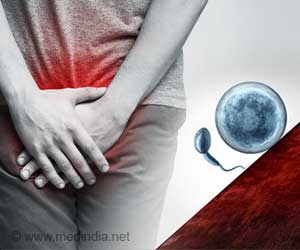A study suggests that men with a common condition that causes frequent nighttime trips to the bathroom can get relief with a minimally invasive treatment that shrinks the prostate.

"Medications are of limited benefit and surgery—while it can correct the problem—can be risky and may cause significant side effects. PAE is a minimally invasive alternative with low risk that appears to reduce symptoms in the overwhelming majority of patients," he said. Benign prostatic hyperplasia (BPH) affects more than half of 50-year-old men and more than 80 percent of 80-year-old men. "All patients are looking for the least invasive treatment with lowest risk, and this U.S. clinical study confirms the results reported by interventional radiologists in Europe and South America," said Bagla. He noted that millions of men shy away from surgical and other transurethral procedures because they understandably do not want to risk urine leak, impotence or other complications that may arise from invasive procedures.
In early findings of the study, 13 of 14 men (92 percent) who had PAE noticed a significant decrease in symptoms after one month. None of the men suffered any major complications, such as impotence, leaking urine or infection. Most went home the day of treatment. Enrollment of 30 men for the first prospective U.S. study to evaluate PAE for enlarged prostates is underway and will be completed by fall, said Bagla. The study will look at clinical success and safety and will follow patients for two years to assess long-term results. When the prostate becomes enlarged, it blocks urine flow through the urethra, leading to aggravating symptoms including nighttime urinary frequency, weak flow and inability to completely empty the bladder. Untreated, BPH can lead to bladder stones, poor kidney function and infections. Interventional radiologists have long treated a variety of cancerous and noncancerous conditions through embolization, which blocks blood flow to tumors and organs. For instance, uterine fibroid embolization (UFE) is used to shrink benign fibroid tumors in the uterus. By temporarily blocking blood flow through the prostate artery, PAE causes the prostate to shrink, providing a larger passageway for urine.
"The participants in our study report a true lifestyle-changing effect after this treatment, with some men stopping medication for their prostate symptoms altogether," said Bagla. "Patients who have not been helped by surgery or laser treatments have benefited. Since the treatment does not involve placing a catheter or device into the penis, there is no risk of narrowing of the urethra, incontinence or bleeding," he noted.
Source-Eurekalert


![Prostate Specific Antigen [PSA] & Prostate Cancer Diagnosis Prostate Specific Antigen [PSA] & Prostate Cancer Diagnosis](https://images.medindia.net/patientinfo/120_100/prostate-specific-antigen.jpg)






